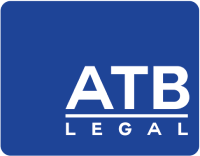With India’s booming tech sector and the global shift toward software-driven innovation, the demand for software patents is steadily increasing. Companies ranging from startups to multinational tech giants are looking to protect their software-based inventions to gain competitive advantage. However, patenting software in India is legally complex and subject to distinct statutory limitations.
This article explores the legal framework governing software patents in India, recent trends in their recognition, and strategic considerations for obtaining protection.
Legal Framework: Is Software Patentable in India?
The Patent Act, 1970 and Section 3(k)
Under Indian law, patentability is governed primarily by the Patents Act, 1970, as amended. The most relevant provision concerning software patents is Section 3(k), which excludes:
“a mathematical or business method or a computer programme per se or algorithms” from patentability.
This has traditionally meant that computer programs (software) are not patentable unless they demonstrate technical application or contribute to a technical effect beyond the software itself.
Interpretation of “per se”
The phrase “per se” plays a crucial role in determining the patentability of software. It was introduced in the Patents (Amendment) Act, 2002 to allow scope for computer programs that are not mere software, but instead provide a technical contribution to the art.
Therefore, while software “per se” is not patentable, software integrated with hardware or software that produces a technical effect may be patent-eligible.
Guidelines Issued by the Indian Patent Office (IPO)
The Indian Patent Office (IPO) has issued various guidelines to clarify examination standards for computer-related inventions (CRIs), particularly:
CRI Guidelines 2017
The 2017 CRI Guidelines marked a significant shift in IPO’s approach. Key highlights:
- Focus on technical advancement or technical effect.
- Inventions must not claim a computer program “per se”.
- Novel hardware is not mandatory, but the invention must solve a technical problem.
Examples of technical effects include:
- Improved speed or efficiency of a system.
- Enhanced security.
- Improved user interface.
- Control of industrial processes.
This signalled a more applicant-friendly approach compared to earlier guidelines.
This blog is a part of our The Ultimate Guide to Intellectual Property Law – ATB Legal blogpost.
What Makes a Software Patentable in India?
To be eligible for patent protection, a software-based invention must:
Show Technical Contribution
The software must solve a technical problem or provide a technical solution, such as improved hardware control, enhanced network communication, or innovative encryption algorithms.
Be More than a Mere Algorithm
The invention must not be a mere set of instructions or a mathematical method. The software must be applied in a practical context.
Be Claimed Properly
The claims should not be directed to the software alone but to a system or method that uses the software in a novel and non-obvious way.
Recent Trends: Rising Presence of Software Patents in India
Increase in Filings
Despite earlier reluctance, the number of software patent filings in India has significantly increased in the last decade. According to IPO data:
- Over 1,500 software-related patent applications are filed annually.
- Tech sectors like FinTech, HealthTech, and AI/ML are major contributors.
- Indian IT majors like Infosys, TCS, and Wipro, and global giants like Google, Microsoft, and IBM, consistently pursue Indian software patents.
Role of Startups and MSMEs
Startups and MSMEs, especially in artificial intelligence, blockchain, cybersecurity, and data analytics, are increasingly leveraging patents to protect their software-driven innovations, often supported by government incentives like Startup India and SIPP Scheme (Startups Intellectual Property Protection).
Challenges in Software Patentability
Despite progress, obtaining software patents in India is not without hurdles:
Ambiguity in Interpretation
The lack of a clear statutory definition of “technical effect” or “technical advancement” leaves room for subjective interpretations by examiners.
Lack of Precedents
India lacks binding judicial precedents in software patent cases compared to jurisdictions like the US or EU. This creates uncertainty during prosecution and litigation.
Lengthy Examination
Software-related patents often face rigorous scrutiny and delays during examination, including multiple rounds of FERs (First Examination Reports).
Comparison with Other Jurisdictions
| Jurisdiction | Software Patentability |
|---|---|
| India | Allowed if showing technical effect; Section 3(k) applies. |
| US (USPTO) | Software is patentable if it meets the Alice test – showing inventive concept and not an abstract idea. |
| EU (EPO) | Software patentable if it solves a technical problem in a novel way. |
| China | Follows a technical effect-based approach like India but has broader acceptance for AI and algorithm-related patents. |
Strategic Filing Tips for Software Patents in India
To improve chances of grant, applicants should:
- Focus on technical contribution and describe the problem-solution approach in detail.
- Avoid using phrases like “computer program” or “software” in isolation.
- Claim a technical system or method, not just the program itself.
- Include flowcharts, system architecture, and real-world application in the specification.
- Highlight any hardware-software integration, if applicable.
- File international applications (PCT) and designate India to build a stronger IP strategy.
Case Law and Notable Decisions
Though case law is limited, a few decisions provide insight:
- Ferid Allani v. Union of India (2020): Delhi High Court acknowledged that computer programs can be patented if they demonstrate a technical effect or technical contribution.
- IPO is now expected to examine CRIs considering this decision and give due consideration to the substance of the invention.
Charting the Path Ahead for Software Patent Protection
The landscape of software patents in India is evolving. With clearer guidelines, increasing innovation in digital technologies, and judicial acknowledgment of technical effects, the scope for protecting software inventions is growing. While statutory limitations under Section 3(k) remain, applicants who structure their inventions strategically stand a much better chance of obtaining protection.
Businesses, startups, and innovators should stay informed of the latest developments, work with experienced patent attorneys, and draft applications that emphasize technical innovation, not just code.
